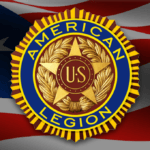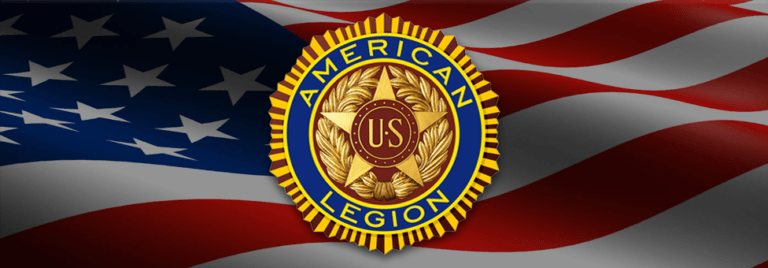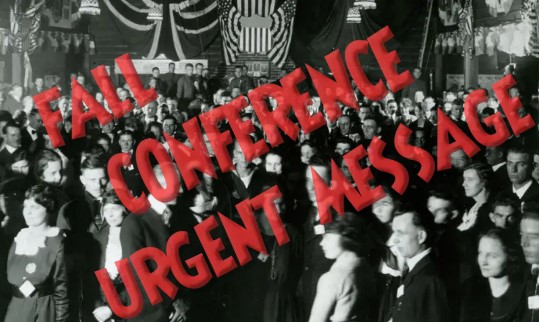Good morning Legionnaires and veterans advocates, today is Monday, January 14, 2019 Caesarean Section Day, Feast of the Ass, International Kite Day and National Clean Off Your Desk Day.
Yesterday in History:
On January 13, 1982, during an extraordinary period of freezing weather, Air Florida Flight 90 took off from Washington National Airport, failed to gain altitude, and crashed into the 14th Street Bridge, where it hit six cars and a truck on the bridge, killing four motorists. After the crash on the bridge, the plane then continued forward and plunged into the freezing Potomac River. Soon only the tail section which had broken off remained afloat. Only six of the airliner’s 79 occupants (74 passengers and 5 crew members) survived the initial crash and were able to escape the sinking plane in the middle of the ice-choked river.
According to the other five survivors, one passenger continued to help the others reach the rescue ropes being dropped by the hovering helicopter, repeatedly passing the line to others instead of using it himself. While the other five were being taken to shore by the helicopter, the tail section of the wrecked Boeing 737 shifted and sank further into the water, dragging [the man in the water] under the water with it.
From the Washington Post:
He was about 50 years old, one of half a dozen survivors clinging to twisted wreckage bobbing in the icy Potomac when the first helicopter arrived. To the copter’s two-man Park Police crew he seemed the most alert. Life vests were dropped, then a flotation ball. The man passed them to the others. On two occasions, the crew recalled last night, he handed away a life line from the hovering machine that could have dragged him to safety. The helicopter crew – who rescued five people, the only persons who survived from the jetliner – lifted a woman to the riverbank, then dragged three more persons across the ice to safety. Then the life line saved a woman who was trying to swim away from the sinking wreckage, and the helicopter pilot, Donald W. Usher, returned to the scene, but the man was gone.
— "A Hero – Passenger Aids Others, Then Dies"
From Time:
So the man in the water had his own natural powers. He could not make ice storms, or freeze the water until it froze the blood. But he could hand life over to a stranger, and that is a power of nature too. The man in the water pitted himself against an implacable, impersonal enemy; he fought it with charity; and he held it to a standoff. He was the best we can do.
— Rosenblatt, R.
The “man in the water” who died 37 years ago yesterday was Arland Dean Williams Jr., a 46 year old veteran and graduate of The Citadel.
TABLE OF CONTENTS:
- NYT: V.A. Seeks to Redirect Billions of Dollars Into Private Care
- Military Times: Plan calls for US troop pullout from Syria to take months, bringing hundreds more troops in to assist
- AP: Pompeo confident of US deal with Turkey to protect Kurds
- Federal Times: Congress passes guarantee to pay feds after shutdown
- Stripes: Commandant tells Coast Guard families: ‘You have not, and will not, be forgotten’
If you wish to be removed from this email list, kindly email me at mseavey with “Remove from Daily Clips” in the subject line. If you have received this from someone who forwarded it and would like to be added, email me at mseavey and I will promptly add you to the list, that you might get the daily American Legion News.
NYT: V.A. Seeks to Redirect Billions of Dollars Into Private Care
By Jennifer Steinhauer and Dave Philipps
Jan. 12, 2019
WASHINGTON — The Department of Veterans Affairs is preparing to shift billions of dollars from government-run veterans’ hospitals to private health care providers, setting the stage for the biggest transformation of the veterans’ medical system in a generation.
Under proposed guidelines, it would be easier for veterans to receive care in privately run hospitals and have the government pay for it. Veterans would also be allowed access to a system of proposed walk-in clinics, which would serve as a bridge between V.A. emergency rooms and private providers, and would require co-pays for treatment.
Veterans’ hospitals, which treat seven million patients annually, have struggled to see patients on time in recent years, hit by a double crush of returning Iraq and Afghanistan veterans and aging Vietnam veterans. A scandal over hidden waiting lists in 2014 sent Congress searching for fixes, and in the years since, Republicans have pushed to send veterans to the private sector, while Democrats have favored increasing the number of doctors in the V.A.
If put into effect, the proposed rules — many of whose details remain unclear as they are negotiated within the Trump administration — would be a win for the once-obscure Concerned Veterans for America, an advocacy group funded by the network founded by the billionaire industrialists Charles G. and David H. Koch, which has long championed increasing the use of private sector health care for veterans.
For individual veterans, private care could mean shorter waits, more choices and fewer requirements for co-pays — and could prove popular. But some health care experts and veterans’ groups say the change, which has no separate source of funding, would redirect money that the current veterans’ health care system — the largest in the nation — uses to provide specialty care.
Critics have also warned that switching vast numbers of veterans to private hospitals would strain care in the private sector and that costs for taxpayers could skyrocket. In addition, they say it could threaten the future of traditional veterans’ hospitals, some of which are already under review for consolidation or closing.
President Trump, who made reforming veterans’ health care a major point of his campaign, may reveal details of the plan in his State of the Union address later this month, according to several people in the administration and others outside it who have been briefed on the plan.
The proposed changes have grown out of health care legislation, known as the Mission Act, passed by the last Congress. Supporters, who have been influential in administration policy, argue that the new rules would streamline care available to veterans, whose health problems are many but whose numbers are shrinking, and also prod the veterans’ hospital system to compete for patients, making it more efficient.
“Most veterans chose to serve their country, so they should have the choice to access care in the community with their V.A. benefits — especially if the V.A. can’t serve them in a timely and convenient manner,” said Dan Caldwell, executive director of Concerned Veterans for America.
One of the group’s former senior advisers, Darin Selnick, played a key role in drafting the Mission Act as a veterans’ affairs adviser at the White House’s Domestic Policy Council, and is now a senior adviser to the secretary of Veterans Affairs in charge of drafting the new rules. Mr. Selnick clashed with David J. Shulkin, who was the head of the V.A. for a year under Mr. Trump, and is widely viewed as being instrumental in ending Mr. Shulkin’s tenure.
Mr. Selnick declined to comment.
Critics, which include nearly all of the major veterans’ organizations, say that paying for care in the private sector would starve the 153-year-old veterans’ health care system, causing many hospitals to close.
“We don’t like it,” said Rick Weidman, executive director of Vietnam Veterans of America. “This thing was initially sold as to supplement the V.A., and some people want to try and use it to supplant.”
Members of Congress from both parties have been critical of the administration’s inconsistency and lack of details in briefings. At a hearing last month, Senator John Boozman, Republican of Arkansas, told Robert L. Wilkie, the current secretary of Veterans Affairs, that his staff had sometimes come to Capitol Hill “without their act together.”
Although the Trump administration has kept details quiet, officials inside and outside the department say the plan closely resembles the military’s insurance plan, Tricare Prime, which sets a lower bar than the Department of Veterans Affairs when it comes to getting private care.
Tricare automatically allows patients to see a private doctor if they have to travel more than 30 minutes for an appointment with a military doctor, or if they have to wait more than seven days for a routine visit or 24 hours for urgent care. Under current law, veterans qualify for private care only if they have waited 30 days, and sometimes they have to travel hundreds of miles. The administration may propose for veterans a time frame somewhere between the seven- and 30-day periods.
Mr. Wilkie has repeatedly said his goal is not to privatize veterans’ health care, but would not provide details of his proposal when asked at a hearing before Congress in December.
In remarks at a joint hearing with members of the House and Senate veterans’ committees in December, Mr. Wilkie said veterans largely liked using the department’s hospitals.
“My experience is veterans are happy with the service they get at the Department of Veterans Affairs,” he said. Veterans are not “chomping at the bit” to get services elsewhere, he said, adding, “They want to go places where people speak the language and understand the culture.”
Health care experts say that, whatever the larger effects, allowing more access to private care will prove costly. A 2016 report ordered by Congress, from a panel called the Commission on Care, analyzed the cost of sending more veterans into the community for treatment and warned that unfettered access could cost well over $100 billion each year.
Tricare costs have climbed steadily, and the Tricare population is younger and healthier than the general population, while Veterans Affairs patients are generally older and sicker.
Though the rules would place some restrictions on veterans, early estimates by the Office of Management and Budget found that a Tricare-style system would cost about $60 billion each year, according to a former Veterans Affairs official who worked on the project. Congress is unlikely to approve more funding, so the costs are likely to be carved out of existing funds for veterans’ hospitals.
At the same time, Tricare has been popular among recipients — so popular that the percentage of military families using it has nearly doubled since 2001, as private insurance became more expensive, according to the Harvard lecturer Linda Bilmes.
“People will naturally gravitate toward the better deal, that’s economics,” she said. “It has meant a tremendous increase in costs for the government.”
A spokesman for the Department of Veterans Affairs, Curt Cashour, declined to comment on the specifics of the new rules.
“The Mission Act, which sailed through Congress with overwhelming bipartisan support and the strong backing of veterans service organizations, gives the V.A. secretary the authority to set access standards that provide veterans the best and most timely care possible, whether at V.A. or with community providers, and the department is committed to doing just that,” he said in an email.
Veterans’ services organizations have largely opposed large-scale changes to the health program, concerned that the growing costs of outside doctors’ bills would cannibalize the veterans’ hospital system.
Dr. Shulkin, the former secretary, shared that concern. Though he said he supported increasing the use of private health care, he favored a system that would let department doctors decide when patients were sent outside for private care.
The cost of the new rules, he said, could be higher than expected, because most veterans use a mix of private insurance, Medicare and veterans’ benefits, choosing to use the benefits that offer the best deal. Many may choose to forgo Medicare, which requires a substantial co-pay, if Veterans Affairs offers private care at no charge. And if enough veterans leave the veterans’ system, he said, it could collapse.
“The belief is as costs grow, resources are going to shift from V.A. to the private sector,” he said. “If that happens on a large scale, it will be extremely difficult to maintain a V.A. system.”
Military Times: Plan calls for US troop pullout from Syria to take months, bringing hundreds more troops in to assist
By: Robert Burns, The Associated Press 2 days ago
to More477
WASHINGTON — The U.S. military said Friday it has started taking steps to meet President Donald Trump’s demand for a complete military withdrawal from Syria. The announcement fueled concern about how quickly the U.S. will abandon its Kurdish allies, amid contradictory statements recently by administration officials on an exit timetable.
The withdrawal began with shipments of military equipment, U.S. defense officials said. But in coming weeks, the contingent of about 2,000 troops is expected to depart even as the White House vows to keep pressure on the Islamic State group.
The withdrawal plan, whose details are classified, includes bringing hundreds of additional troops into Syria temporarily to facilitate the pullout. These include troops to provide extra security for those who are preparing to leave. The full withdrawal is expected to take several months.
The USS Kearsarge amphibious assault ship is now in the region and could provide troops and equipment to support the withdrawal.
Once the troops are gone, the U.S. will have ended three years of organizing, arming, advising and providing air cover for Syrian, Kurdish and Arab fighters in an open-ended campaign devised by the Obama administration to deal the IS group a lasting defeat.
Uncertainty over the timing and terms of the Syria pullout have raised questions about the Trump administration’s broader strategy for fighting Islamic extremism, including Trump’s stated intention to reduce U.S. forces in Afghanistan this summer.
U.S. airstrikes against IS in Syria began in September 2014, and ground troops moved in the following year in small numbers.
The U.S. military has a limited network of bases inside Syria. Troops work mostly out of small camps in remote parts of the country’s northeast. Also, U.S. troops are among 200 to 300 coalition troops at a garrison in southern Syria known as al-Tanf, where they train and accompany local Syrian opposition forces on patrols to counter the IS group. Al-Tanf is on a vital road linking Iranian-backed forces from Tehran all the way to southern Lebanon — and Israel’s doorstep.
Trump’s decision to leave Syria, which he initially said would be rapid but later slowed down, shocked U.S. allies and angered the Kurds in Syria, who are vulnerable to attack by Turkey. It also prompted the resignation of Defense Secretary Jim Mattis and drew criticism in Congress. Sen. Jack Reed, a Rhode Island Democrat, called the decision a “betrayal of our Kurdish partners.”
The U.S. military command in Baghdad, which is managing the counter-IS campaign in Iraq and Syria, said Friday that it "has begun the process of our deliberate withdrawal from Syria," adding that, for security reasons, it would not reveal timetables, locations or troop movements. Other U.S. officials later made clear that the pullout did not yet include troops.
U.S. troops are still working with a partner known as the Syrian Democratic Forces to stamp out the last IS holdouts in the Middle Euphrates River Valley near the Iraqi border. Trump has asserted that the IS group in Syria is defeated, but others have said a continued U.S. military presence is necessary to prevent a resurgence of the group. Two weeks before Trump announced he was ordering a pullout, Gen. Joseph Dunford, chairman of the Joint Chiefs of Staff, said the U.S. still had a long way to go in training local Syrian forces to stabilize areas ridden of the IS group. He said it would take 35,000 to 40,000 local forces in northeastern Syria to maintain security, but only about 20 percent had been trained.
Another complication is the fate of hundreds of foreign IS fighters being held in Syria. The U.S. doesn’t want these prisoners to be released once U.S. forces are gone, since they could rejoin the militant cause in Syria or elsewhere.
There has been confusion over plans to implement Trump’s pullout order amid threats from Turkey to attack the Kurdish fighters, who are seen by Ankara as terrorists because of their ties to insurgents within Turkey.
On a visit to Turkish troops stationed near the Syrian border Friday, Turkey’s defense minister, Hulusi Akar, reiterated that Ankara is "determined" to fight Kurdish militias it considers terrorists and said military preparations were ongoing.
"When the time and place comes, the terrorists here will also be buried in the ditches and trenches they have dug," he said.
Earlier this week, Trump’s national security adviser, John Bolton, said American troops will not leave northeastern Syria until the IS group is defeated and American-allied Kurdish fighters are protected, signaling a slowdown in Trump’s initial order for a rapid withdrawal.
In Cairo on Thursday, Secretary of State Mike Pompeo said that although Trump has decided to bring troops home, he will keep up the fight against the IS group more broadly.
"Let me be clear: America will not retreat until the terror fight is over," Pompeo said.
The distinctive feature of the U.S. military campaign in Syria is its partnership with the Kurds and Arabs who were willing to act as American proxies by fighting the Islamic State group without U.S. troops having to take the lead combat role. U.S. forces took a similar approach in neighboring Iraq, starting in 2014, but in that case, they had a willing partner in the Iraqi government, whereas in Syria, the U.S. is present without the blessing of President Bashar Assad.
Syria also is complicated by the presence of Russian troops who are, in effect, propping up the Assad government, and by Iranian support for Assad. American and Russian warplanes have shared the skies over Syria, carrying out separate— and in some cases, conflicting — missions against the IS group and other targets.
The U.S. has about 5,200 troops in Iraq to assist its security forces, and Trump has given no indication he intends to withdraw them any time soon. He has, however, asserted that the U.S. must bring an end to the Mideast wars that began after the Sept. 11, 2001, terror attacks. He has questioned the wisdom of continuing the 17-year war in Afghanistan and recently demanded that about half of the 14,000 U.S. troops there be sent home.
AP: Pompeo confident of US deal with Turkey to protect Kurds
By: Matthew Lee, The Associated Press 17 hours ago
Share to FacebookShare to TwitterShare to EmailShare to More20
ABU DHABI, United Arab Emirates — Despite Turkey’s vows to the contrary, U.S. Secretary of State Mike Pompeo said Saturday he was confident the two nations can agree on a way to protect U.S.-allied Kurdish rebels in Syria after American troops withdraw from the country.
After speaking to Turkish Foreign Minister Mevlut Cavusoglu, Pompeo said an agreement was a work in progress but can be achieved in a way that allows the Turks to defend their country while leaving alone Kurds who do not pose a threat.
The top U.S. diplomat said he was “optimistic” that Kurds who fought alongside U.S. forces against the Islamic State group in Syria are not threatened by pledges from Turkey’s President Recep Tayyip Erdogan to launch military operations against what he terms Kurdish “terrorists.”
"We recognize the Turkish people’s right and President Erdogan’s right to defend their country from terrorists and we also know that those who aren’t terrorists, those who were fighting alongside us all this time, deserve to be protected and we are confident that we can achieve an outcome that achieves both of those: protect the Turks from legitimate terror threats and prevent any substantial risks to folks who don’t present terror risks to Turkey," Pompeo told reporters.
"We had this conversation, many details still to be worked out but I am optimistic we can achieve a good outcome," Pompeo said of his call with Cavusoglu from Abu Dhabi, where he was on the fourth leg of a nine-nation Mideast trip.
He offered no details, but said the U.S. special envoy for Syria and the anti-IS coalition, Jim Jeffrey, had traveled to northern Syria earlier this past week to work on the matter and would be returning to Turkey to continue the discussions.
Turkey considers many of Syria’s Kurdish groups to be terrorists and has pledged to attack them. The threats have intensified in recent days as the U.S. begins the withdrawal process from Syria on President Donald Trump’s orders.
On a visit Friday to Turkish troops stationed near the Syrian border, Turkey’s defense minister, Hulusi Akar, said his country was "determined" to fight Kurdish militias it considers terrorists. He said military preparations were ongoing.
Pompeo and U.S. national security adviser John Bolton have made similar assurances to the Kurds, which have been denounced by Erdogan and other Turkish officials.
Comments by Bolton on the matter drew a quick rejection this past week from Erdogan, who said they were a "serious mistake" and that Turkey "cannot make any concessions in this regard."
Turkey insists its military actions are aimed at Kurdish fighters in Syria — the Syrian Kurdish Peoples Protection Units, or YPG — whom it regards as terrorists, and not against the Kurdish people. That has been Turkey’s longtime position. Turkey has rejected any role for Kurdish fighters in restoring peace to the war-torn region.
Federal Times: Congress passes guarantee to pay feds after shutdown
By: Jessie Bur 2 days ago
AddThis Sharing Buttons
Share to Facebook2.1KShare to TwitterShare to EmailShare to More7
The House passed legislation Jan. 11 that guarantees back pay for federal employees after the government reopens, which was approved by the Senate the day before.
President Donald Trump has already indicated that he would sign such legislation, making it very likely that feds will at least see repayment for missed paychecks after the shutdown ends.
Jan. 11 marks the first day that over 800,000 federal employees will miss a full paycheck due to the partial government shutdown.
“With lawmakers admitting there is no end in sight to this shutdown, furloughed and unpaid working federal employees can take some comfort in knowing that Congress has passed legislation providing them with back pay once this political nightmare is over,” said National Active and Retired Federal Employees Association National President Ken Thomas in a statement.
“Yet, even that is not an immediate solution. Federal employees are scrambling to make arrangements for unpaid bills, including tapping their retirement accounts. Evictions are becoming a real possibility, medical issues go untended, local economies are suffering and services to citizens have ceased as workloads pile up.”
The legislation does not help federal contractors, however, who may never receive compensation for the days they are unable to work during this government shutdown.
Stripes: Commandant tells Coast Guard families: ‘You have not, and will not, be forgotten’
By STARS AND STRIPES Published: January 14, 2019
Coast Guard Commandant Admiral Karl Schultz drew attention to ongoing missions around the globe and expressed his support for Coast Guard families as the service prepared for about 41,000 members to go without paychecks on Tuesday as part of the ongoing partial government shutdown.
"While our Coast Guard workforce is deployed, there are loved ones at home reviewing family finances, researching how to get support, and weighing childcare options—they are holding down the fort," Schultz wrote on Sunday. "Please know that we are doing everything we can to support and advocate for you while your loved one stands the watch. You have not, and will not, be forgotten."
The potential for a shutdown began when Congress failed to pass a budget for portions of the federal government before a Dec. 21 deadline, stoked by a disagreement with President Donald Trump to fund his campaign promise of a wall along the U.S. border with Mexico.
The other military service branches are part of the Department of Defense, which has been unaffected by the shutdown. But unlike the Army, the Air Force, the Navy and the Marine Corps, the Coast Guard falls under the Department of Homeland Security, which is affected.
Around 7,400 civilian Coast Guard workers have been furloughed and the disbursement of pay for some 50,000 retired Coast Guard members and employees could be affected, officials said.
Coast Guard officials were able to pull together the $150 million needed to cover the final checks of 2018, but funds aren’t available for this week’s scheduled payday.










